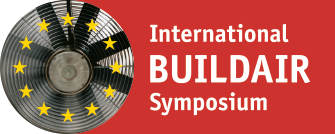Purpose of the work
To analyze the impact of different leakages in buildings by way of simulations.
Method of approach
Part of the research project “Evaluation of leakages in airtight layers – Recommendations for action for construction professionals”, was visiting an object, where air leakages in the roof construction were identified as the cause for moisture damage in the roof structure. The latter was not back-ventilated and was characterized by a separation of the leakages into three individual areas corresponding to the degree of damage (along each of the rafters - heavily rotted rafter heads, beginning damage, and intact rafter heads). This reference case resulted in a simulation model of a ventilated, hygro-thermal material. Based on the leakage distribution and the pressure differential of the building component, the model calculates the air entry into the structure, showing an additional convective moisture exchange in the material besides the diffusive one. The reference object visited serves to check the simulation model for plausibility. A variation study shows the impact of changed leakage situations on the moisture accumulation on the roof.
To evaluate the relevance of leakages for energy efficiency and level of comfort a zonal simulation model with the same leakage distribution as in the moisture analysis was developed for the residential space in question. Zonal models typically divide the space into 10 to 100 zones connected to each other by flow paths. They allow the simulation of a local resolution of temperature and flow distributions in a room while maintaining a short computation time.
In addition to the above-mentioned aspects of leakage evaluation, the project also analyzed the olfactory relevance of leakages. Smells are complex sensory perceptions influenced by many aspects. The evaluation of a smell entering through an air leakage depends on three main factors: the nature of the odor (intensity, quality, hedonics), the human factor (psychological, physiological, and cultural influences), specification of the leakage (flow speed, size and number of leakages, relation of the concentration to the odor threshold of the odorant, frequency, as well as continuity and distribution of the smell in the room). The greatest challenge here is to detect diffuse, small leakages and emission paths/flow paths that cannot be easily traced.
Content of the contribution
Overview of the simulation model developed in the research project and the results of the variation study, as well as a digression into the olfactory relevance of leakages.
Results and the evaluation of their significance
The simulation indicates an increase of the airtightness of either the vapor barrier or the gypsum cladding underneath or a back-ventilation of the roof as improvement measures for the reference object. A change of external leakages (e.g. connection joints, windows, etc.) does not turn out to be relevant for the accumulation of moisture in the roof.
The zonal simulation shows that the leakages recorded are only relevant for the energy efficiency to some minor extent and that adverse effects on the level of comfort are not to be expected.
The results of the simulation refer to thermally driven flows. In future, the model is to be extended to wind flows. For future projects, a stronger validation of the model through different set-ups than the one analyzed in this reference case is also needed.
Conclusions
The simulation model illustrates the impact of different leakages connected in series or in parallel. It also shows different ways of making roof structures airtight and underlines the importance of a professional installation. The model demonstrates that leakages without major impact on the energy efficiency of a building may still be relevant to hygro-thermal aspects.
Note
For more information, please contact the reference author at: victor.norrefeldt@ibp.fraunhofer.de





